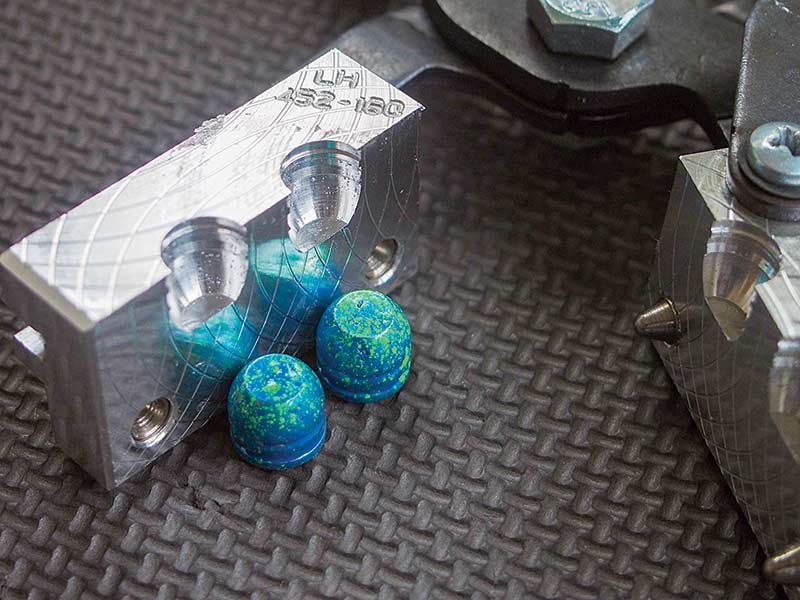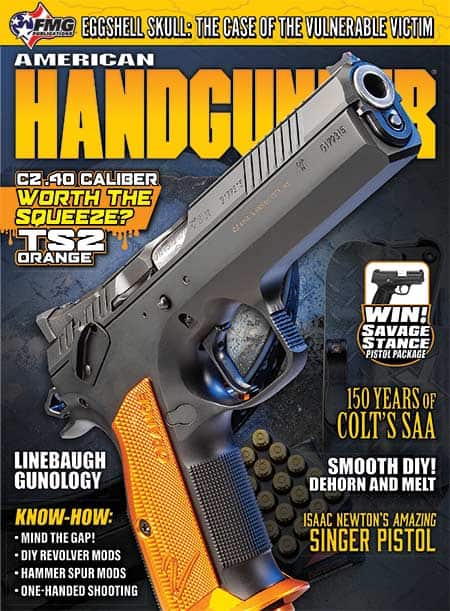Mind the Gap! .45 GAP Secrets
One of my carry guns is a GLOCK 38. I derive great pleasure in shooting it, and since ammo is not readily available, I reload .45 GAP. I stock it with “store bought” for carry, but I sure do like to reload for it.
If you are reading this, your thought pattern is probably going down one of two roads: “We all know that this was a solution, just searching for a problem, right?” Or perhaps, “I bought a .45 GAP, and I’m still trying to justify its existence.”
GAP Facts
The logic behind the GAP is the same logic that gave birth to the .30 Super Carry. We strive for efficiency in smaller and smaller packages.
The GAP can do most of the tasks a .45 ACP can do, including propelling decisive projectiles with morale-boosting accuracy. The GAP can do these things in a cartridge shorter than a 9mm and in a 9mm-sized gun.
The GAP is probably the most entertaining gun for reloaders and one of two guns I shoot for range therapy. I know you’ll ask, so the other gun is a .45 Long Colt. Why? Simple: I’m only an average shooter, but I can print tiny, often one-hole, groups all day with my GAP.
The maximum OAL for a .45 GAP is 1.137″, which is shorter than the 9mm at 1.169″. The GAP is loaded to .45 ACP +P pressures, which are lower than 9mm and .40 S&W. Because of these specs, the GAP can duplicate .45 Auto performance in bullet weights ranging from 155-200 grains.
In my experience, 230-grain bullets don’t work well, usually because they are too long. Lyman does have published loads for their 452374 cast bullets, however. The density difference between a jacketed and solid lead bullet is the trick.
GAP Learnings
Every piece of reloading information on the GAP will tell you not to convert .45 ACP cases to GAP. Compared to the ACP, the GAP has a rebated rim, uses small pistol primers, and has a completely different internal taper. The first two factors don’t scare me. The third should scare everyone. Unless the zombie hoards are banging on the chain link fence surrounding your compound, don’t even try it.
You can reload .45 ACP “mixed” or “range pickup” brass until it cracks or it is so worn out one cannot read the headstamp. With GAP, it gets a little trickier. Run questionable brass and one may discover a new definition for “GLOCK bulge.” You’ll get fewer reloads from GAP brass.
GAP Loads
The GAP works best with medium to fast-burning powders. I generally run 231, True Blue, Unique, or Accurate #5. I get my best accuracy with True Blue and AA#5, so I’ll share my pet loads.
Up first, I use Bear Creek Bullets .452″ 180-grain LSWC with 5.6 grains of True Blue and Wolf small pistol primers at an OAL of 1.136″. This load prints single hole, off-hand, groups at 7 yards for me. Please use caution when using lead in polygonal barrels.
Next up, Lee Precision .452-160-RF sized to .452″ over 7.0 grains of Accurate #5 and a CCI SPP for .968″ OAL. Western Powders lists a similar load using a 155-grain Laser Cast bullet, which is an excellent product, by the way. Depending on your alloy, the .452-160-RF will run plus or minus 160, so these bullets will have almost identical characteristics. These cartridges have about the same recoil as a light 9mm. This is a cheap practice round.
How about Everglades Ammo .45 caliber 200-grain PFP over 6.0 grains of True Blue and a CCI SPP at 1.045″ OAL? This is the load for high-volume or progressive loaders who like the ring of steel. True Blue is the perfect powder for accurate metering and consistent load weights.
GAP Loading
Reloaders can use almost any .45 ACP dies for sizing the GAP, and almost as many for seating bullets. The most important thing is to use a taper crimp. I use an RCBS Taper Crimp, part number 18962. I have tried several, but this is the best taper crimp I have used.
Cartridge OAL is critical. Because of the short case, the volume can change dramatically, which affects pressure. When in doubt about your specific load, use the Lyman Pistol & Revolver Handbook.
Light loads mean more brass life. There is a very good reason why I load on the bottom end of the charts for practice loads. The less I stress my brass, the more I get to use it. It does not take much to get a 200-grain bullet to bang a plate rack. I only load higher pressures when my gun is in a chest rig over my waders.







